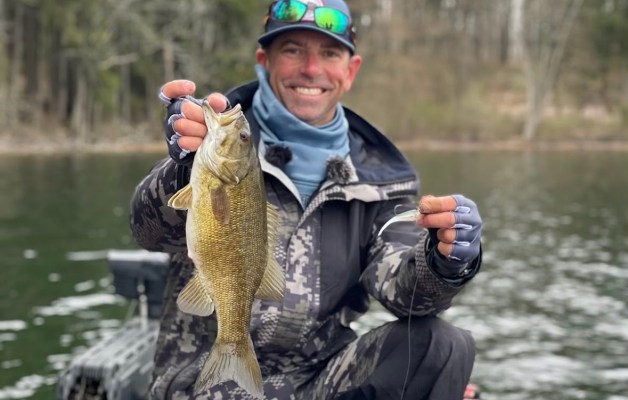Talk to the top-10 leaders at the 2008 Bassmaster Classic on Lake Hartwell about their patterns and you begin to feel like you are on some kind of amusement park Ferris wheel.
"Shallow," says one. "Deep!" exclaims the other.
"Fast," says another. "Slow, real slow," chimes the other.
Shallow. Deep. Fast. Slow. Deep. Shallow. Slow. Fast.
Wait a minute, what's going on here, anyway?
With Day Two of the Classic down and half the field eliminated, the leading pros became a bit more vocal with their pattern information. And those patterns are all over the board.
Here's the Classic pattern ride in a nutshell, in order of how they stood after day two.
1. Alton Jones: deep
2. Charlie Hartley: shallow
3. Cliff Pace: deep
4. Kevin VanDam: shallow
5. Jeff Kriet: deep
6. Mike Iaconelli: deep
7. Greg Hackney: shallow
8. Bobby Lane: deep then shallow
9. Edwin Evers: deep
10. Aaron Martens: deep
11. Scott Rook: shallow
12. Skeet Reese: shallow
Do you wish you had taken your Dramamine now?
Of course, the terms shallow and deep are all relative, but for the sake of the above list, shallow defines anything 15 feet and less and deep refers to anything deeper.
The deep guys, including Jones, Pace, Kriet and Iaconelli, all speak of depths ranging from 20 to 50 feet. The common terms in their vernacular are timber and steep drops. But they seem to be more keyed in on the bottom contour than the timber itself.
"On of my best spots is a real steep clay ditch that drops from 26 feet on both sides down to 36 feet in the middle of it," Jones described. "And the ditch is super narrow and tight and the fish are down in the middle of it."
"I'm fishing classic winter time spots," Iaconelli explained. "Steep, 45-degree channel swing banks in 30- to 50-feet of water. There is timber down there, but I'm not concentrating on the timber — it's all about the drop. Right where deep water comes in and kisses that drop on the steepest part is the sweet spot."
Kriet described his best area from day two, which produced 18 pounds, 12 ounces, as a series of long clay points that run way out into the lake and are divided up by steep drains lined with timber.
"I'm not fishing the timber, but rather the exact roll where the bottom breaks from 25 to 50 feet," Kriet said. "Those fish are sitting right on top of that break. I can actually troll up to the break and see the fish on my graph. I caught one that way today, looking at him on my graph."
As for lures, football jigs, drop-shots and jigging spoons are serving up healthy keepers for the deep water club.
Jones, Kriet and Iaconelli have all mentioned that crawling football jigs along the bottom super slow is key.
In the shallow water group, Charlie Hartley, in second place, is fishing docks and brush in 5 to 8 feet of water in the mid-lake area. Most of his quality fish have come from one particular pocket featuring four brush-sweetened docks.
His bread and butter? A 3/8-ounce Venom jig fished at the speed of a glacier.
"Here's the scary thing," Hartley said. "I spent four hours on just four docks yesterday — most people can't fish that slow."
Indeed, every cast Hartley makes lasts for minutes, not seconds — a virtual eternity in the pressure cooker that is the Bassmaster Classic.
Each brush pile he fishes is an entire universe with each branch being its own planet that Hartley feels he must explore.
"I guarantee you've never seen anyone fish as slow as I'm fishing," Hartley emphasized. "Instead of pulling that jig up to a limb and dropping it back down once or twice, I'm pulling it and dropping it down 20 or 30 times — real easy and slow."
Other shallow water hounds, including VanDam, Hackney and Rook are whizzing crankbaits around the bank in depths of 5 to 13 feet.
On Day Two, VanDam showed what kind of tournament adjustments it takes to be the best when he abandoned his cranking water down the lake (which produced 20 pounds, 3 ounces on day one) and made a long run up the Seneca River to combat the bright sunshine with more stained water.
"The bluebacks (herring) completely vacated my best places," VanDam said of Day Two. "It was obvious they were gone; I couldn't see them on my graph. No bait, no bass. So I completely changed areas and patterns."
As the Classic battle rages on for Day Three, it will be interesting to see, not just who wins, but what pattern — shallow or deep — provides the horsepower to get to victory lane.




